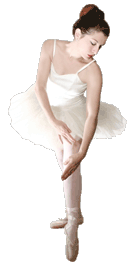The Mexican hat dance is the national folk dance of Mexico. Also known as Jarabe tapatío, the music to this dance medley was composed by Jesús González Rubio during the revolution in the 1800s in an attempt to restore unity to the country. Later, the piece was embellished by the choreography of Felipa Lopez. However, the Mexican hat dance became popular on a global scale after it was adopted into the performance repertoire of the famed Russian ballerina of the time, Anna Pavlova.
Exactly how or why this dance received its name is a bit of a mystery. Clearly, the dance includes traditional Mexican folk dance forms and has a long-standing reputation of being performed as a courtship ritual between couples. Some linguists suspect that this is why the Mexican hat dance is named after the dance form called ‘Jarabe,’ which means ‘sweet syrup.’ Others argue that the translation from the Arab word Xarab, which means ‘mixture of herbs,’ pays tribute to the collection of folk dance steps and musical styles borrowed from conventional songs of the period.

The traditional costumes worn to perform the Mexican hat dance today are also representative of a blend of cultural styles. For instance, the female dancer is adorned in the China (pronounced ‘CHEENA’) Poblana, the costume of the mid-19th century female servant girl. The male dancer of the dance, however, sports the charro, the three-piece suit that didn’t become popularized until the 1930s with the introduction of the Mariachi, a type of musical ensemble usually featuring a trio of musicians.
Despite these inconsistencies, the Mexican hat dance is an artful expression of the pursuit of romance. In fact, it tells a story. It begins with the male exhibiting his machismo through a series of intense footwork, including progressively aggressive heel tapping and stomping. Meanwhile, his female counterpart meets his advances with plenty of opposite heel tapping and skirt-twirling. This portion of the dance is dedicated to building up energy and, depending on the circumstances, may involve a synchronized performance by several couples at once.
Just as the man succeeds in garnering the interest of his partner, he becomes "drunk" with confidence, which results in him being dismissed as a ‘borracho,’ or drunkard. However, he eventually wins the lady, evidenced by his tossing of his sombrero to the ground and lifting his leg high over her head and she bows to retrieve it. Together, they enter into a duo of steps attributed to a military step known as a ‘diana.’ Finally the dramatic climax arrives. She places the man’s sombrero so that it covers their faces, from where the audience assumes they are embraced in a private kiss.
